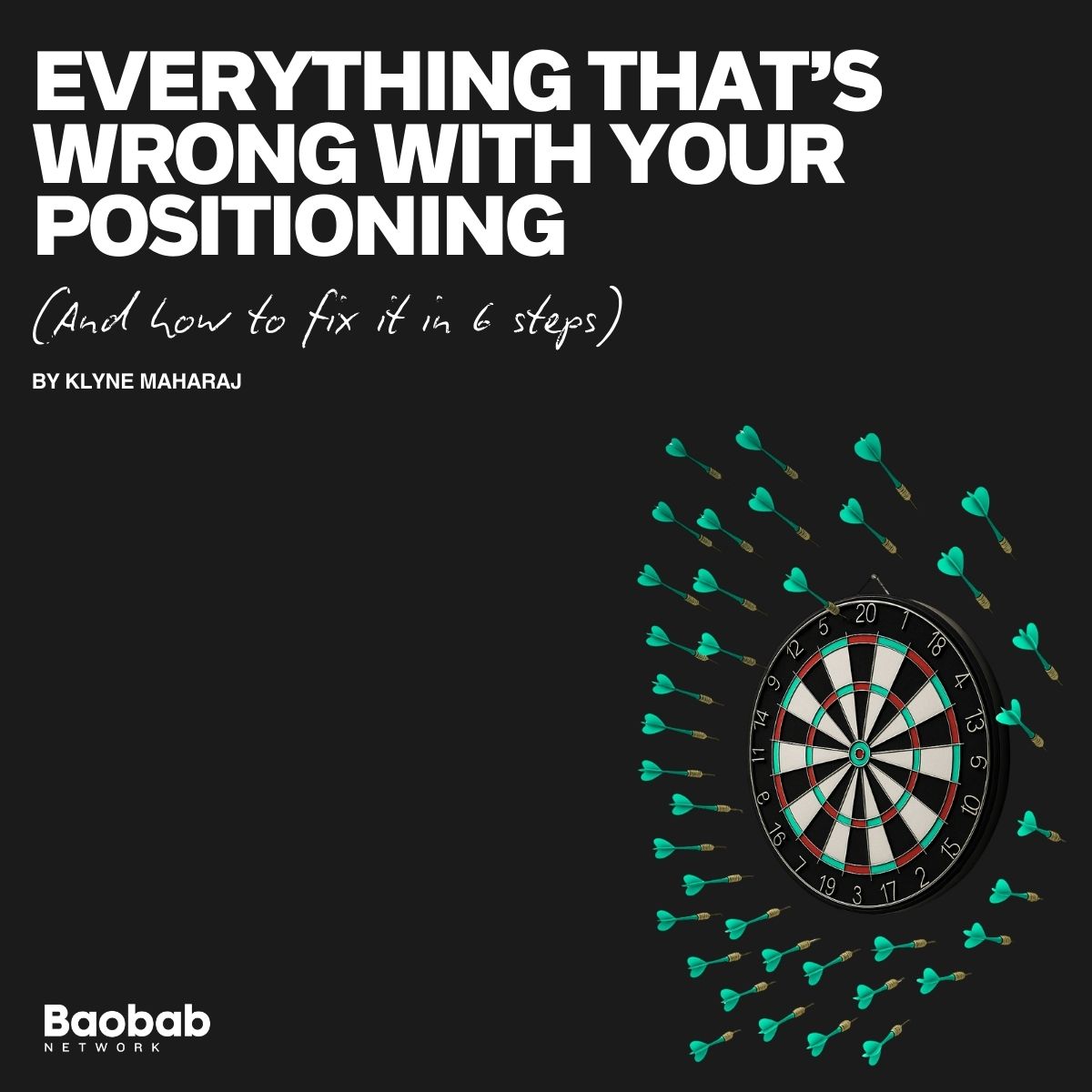At Baobab, the very first thing we do with every company in our Accelerator is work on their positioning.
Why is this priority #1 for us? Well, if you get your positioning right, everything else gets easier:
- You attract the right customers, which keeps you alive.
- You attract the right talent, which makes hiring easier and cheaper.
- You attract the right investors, because they instantly understand what you do and why it matters.
Sounds simple, but most founders get it wrong. Here are the most common mistakes we see, and how to fix them.
1. Starting With Customers Instead of Alternatives
Most founders start by defining their “ideal customer.” But here’s the problem: without context, that’s just guesswork.
❌ Done badly: “Our customer is a retailer in Nairobi, so let’s build for them.”
✅ Done right: Ask: If our product didn’t exist, what would people do? Maybe they’d use a bank overdraft, loan shark, or even pen and paper. Once you know the real alternatives, you can position your product as the better choice.
2. Talking About Features Instead of Benefits
Customers don’t buy features: they buy what those features do for them.
❌ Done badly: “Our fintech app has a live dashboard.”
✅ Done right: “We surface critical cashflow info in real time, so you can make decisions in minutes, not days.” It’s the outcome, not the feature, that sells.
3. Talking About Benefits Without Quantifying Them
Even if you move past features, many founders stop short of making their benefits concrete.
❌ Done badly: “We help SMEs get loans faster and cheaper.”
✅ Done right: “We approve loans in 24 hours (instead of 3 weeks). Our rates are 40% lower than banks. Our platform is so simple that a shop assistant can use it.” Numbers shift your benefits from ‘opinion’ to ‘fact’.
4. Picking Customers Without Linking to Benefits
Founders often try to serve everyone at once. That’s not trying to build a big business – it’s spraying and praying.
❌ Done badly: “We sell to SMEs, corporates, NGOs, governments.”
✅ Done right: Once you know the benefit you’re world-class at delivering, ask: Who cares most about this benefit? For example: “We help mid-sized retailers who need instant access to working capital to keep shelves stocked.” That’s a customer segment thats going to buy quickly, at full price, and tell their friends.
5. Creating Arbitrary Market Categories
When you invent your own category, you force yourself to explain from scratch and customers switch off.
❌ Done badly: “We’re an AI-powered financial ecosystem.” Nobody knows what that means.
✅ Done right: Anchor yourself in a known category, then explain how you’re different. Example: “We’re a lending platform for African SMEs: think Apple Pay, but for credit.” Clear, quick, relatable.
6. Forgetting to Tell the Story
Data and features don’t stick. Stories do.
❌ Done badly: A deck full of charts, buzzwords, and claims with no thread.
✅ Done right: “African SMEs are locked out of credit. Banks are slow, loan sharks are expensive. Our platform gives them fair, fast loans. That means more stocked shelves, more sales, more jobs.” Stories give your product context and urgency.
Final Word
Positioning makes or breaks most startups before they even get a chance to show the world their product. Get it wrong, and you confuse customers, repel talent, and lose investors. Get it right, and everything else clicks into place. That’s why it’s the first thing we do with every founder we back.
If you want to dive deeper, I can’t recommend April Dunford’s work enough. You can read more about her positioning methodology here.



